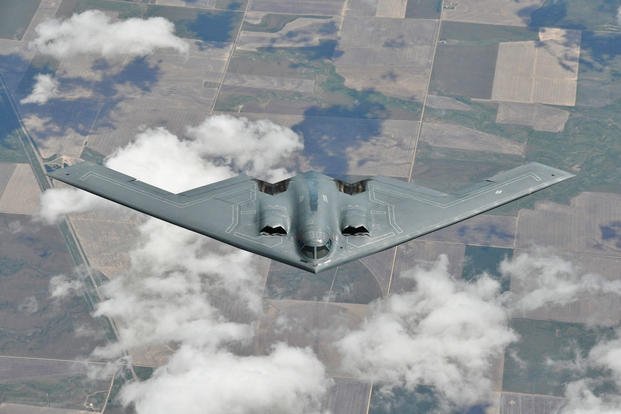The high pace of operations overseas is delaying the Air Force's ability to outfit aircraft with new transponders required by the Federal Aviation Administration, officials said.
The service faces a Jan. 1, 2020, deadline to configure its fighters, bombers and other aircraft with the latest version of the satellite-based transponder known as the Automatic Dependent Surveillance-Broadcast, or ADS-B.
But because the Air Force isn't able "to sit the entire fleet down and look at what each aircraft needs" due to ongoing missions, it's likely going to miss the crucial date, Maj. Gen. Timothy Fay, director of strategic plans at the service's headquarters, told lawmakers on Wednesday.
His comments came during a hearing, "Next Generation Air Space Control -- Ensuring Air Force Compliance by Jan. 1, 2020," held by the House Armed Services' Seapower and Projection Forces Subcommittee, headed by Rep. Randy Forbes, the outgoing Republican congressman from Virginia.
Fay appeared alongside Maj. Gen. Michael E. Fortney, vice commander of Global Strike Command; Brig. Gen. David Nahon, deputy director of plans and programs at Air Combat Command; and Brig. Gen. Jon Thomas, director of strategic plans, requirements and programs at Air Mobility Command.
"This is really concerning, obviously," said Vicky Hartzler, a Republican from Missouri, whose district includes Whiteman Air Force Base, home to the service's B-2 Spirit stealth bombers.
The FAA issued a ruling in 2008 to establish the regulations and procedures for transitioning to ADS-B. The technology -- required for all aircraft flying at or above 10,000 feet -- uses global positioning satellites rather than radar to determine an aircraft's location, airspeed and other data, and broadcasts that information to a network of ground station.
Air Force officials have previously said the service was likely to miss the deadline because of limitations caused by spending caps known as sequestration.
While some newer Air Force aircraft, like the F-35 Block 4 configuration, will already come equipped with ATS-B, many of the service's planes won't be ready to make the transition in time without straining ongoing missions or testing, officials said.
For example, most Global Strike Command aircraft including the B-2, B-1B and B-52 bombers and Air Combat Command aircraft such as the F-16 Block 30 aircraft, F-22 and some F-35 fighters will miss the deadline. Even about 10 percent of Air Mobility Command aircraft such as the C-5 and other cargo planes will miss the deadline.
The change to the new technology won't affect the Air Force's "war-fighting effort," Fay said. However, it will have an impact on training and readiness missions because aviators will need to "fly longer and lower" so as to not violate the FAA rules, he said. In addition, pilots will have to be in contact with the proper air controller tower at least an hour before flight, he said.
When asked how far along allies are implementing the new technology, Fay said, "As far as global operations are concerned, the primary driver for us would be in the European theater," where a similar deadline is set to take effect "shortly after ours in 2020." In the Pacific, countries such as Australia and Singapore also plan to adopt the technology, he said.
When Rep. Duncan Hunter, a Republican from California, asked if some upgrades could cost as much as $2.5 million per plane, Fay didn't dispute the figure. Adding the required hardware and software to older aircraft is almost always more expensive than doing so to newer aircraft such as the F-35, the general said.
Lt. Gen. James Holmes, the Air Force's deputy chief of staff for strategic plans and requirements, in March told the same committee that spending caps known as sequestration shortchanged the program and warned panel members there would be a delay.
"Right now there is about a $1.2 billion difference between what we need to accomplish the mandate and what we have committed in our budget," he said at the time. The program called for $5.6 billion to modernize the whole fleet, with the Air Force only able to put forth $4.4 billion.
If Air Force fleets will knowingly miss their deadline, the generals said, they will petition to the FAA exemptions for certain aircraft.
--Oriana Pawlyk can be reached at oriana.pawlyk@military.com. Follow her on Twitter at @Oriana0214.




























